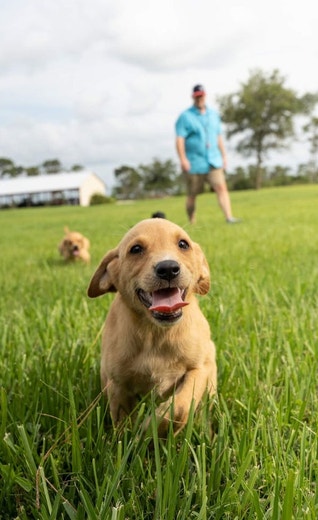
How To Keep Your Dog Cool
Exercising and physical recreation are the best ways to bond with your dog. I strongly encourage dog owners to get their dogs moving, because physical activity helps reduce stress, fights obesity and improves behavior problems. However, when outside temperatures are warmer, you need to be aware of the limitations the heat places on your dog’s ability to exercise safely and keep your dog cool.
HEAT STROKE IN DOGS CAN OCCUR QUICKLY
Your dog has many natural ways to avoid overheating, including panting, drinking water, seeking shade and even standing or rolling in a pool of water. However, if you don't pay attention to keeping your dog cool, your dog’s innate mechanisms to cope with heat can be undermined when your friend is exercised or confined on a hot day. Heat stroke can occur within minutes in certain conditions. Heat stress is more prevalent in brachycephalic breeds (or dogs with short noses), dogs that have recently been ill, dogs with underlying health problems or dogs taking certain medications. Obesity is also a predisposing factor for heat stroke.
KEEP YOUR DOG COOL DURING EXERCISE
Dogs that are not acclimated to warmer temperatures or physical exertion are more likely to suffer heat stroke. Environmental acclimatization takes time, so dogs moving to hotter climates need to be closely observed during play and exercise. Dogs starting a new exercise routine during the summer should be given rest periods when needed.
Plan workouts with your dog in the early morning hours or in the late afternoon when temperatures cool down. Bring along plenty of cold water and a collapsible water bowl suited for serving your dog.
In addition to heat stroke, other signs of heat exposure in dogs can include paw pad burns. Although a dog's footpads are thick and durable, they can become burned and sensitive after being exposed to hot surfaces for a long period of time. Also, dogs with white coats can be prone to sunburn and skin cancers. Monitor your dog for all of these problems associated with heat and sun exposure.
SIGNS INCLUDE:
- Continuous panting
- Showing signs of anxiety
- Whining
- Pacing
- Slowing down or refusing to participate in an activity
- Wanting to lie down
DOG HEAT STROKE MAY FEATURE THE FOLLOWING SIGNS:
- Depression
- Staggering
- Inability to rise and walk
- Mental dullness
- Unresponsiveness to voices
- A bluish tint to gums and tongue
- Blindness
- Seizures
- Unconsciousness
IF YOUR DOG OVERHEATS
If you’re concerned that your dog is overheating, try these actions:
- First, get her out of the heat and offer her a drink of cool water.
- Place her in front of a fan, preferably an air conditioner.
- A fast drive with the windows down works if a fan is not available.
- Wet the fur and skin with tepid water to speed cooling.
- Do not use ice-cold water on your dog; this causes vasoconstriction in the skin and actually locks in the heat.
The actual core body temperature in a heat stroke victim does not directly correlate to the overall outcome, but the amount of time the temperature stays elevated does. If you believe your dog is suffering from a heat stroke, take her to a veterinarian immediately. Do not hesitate: Minutes spared could mean a life spared.




